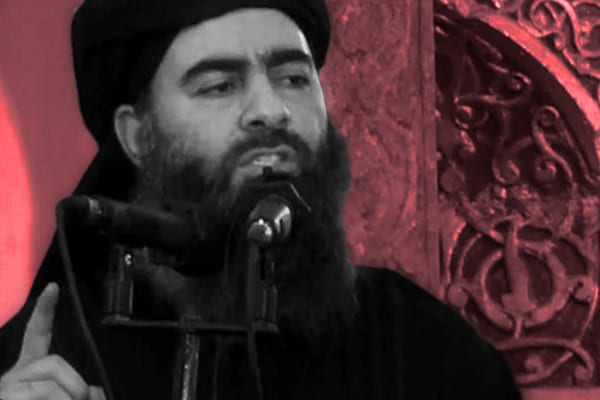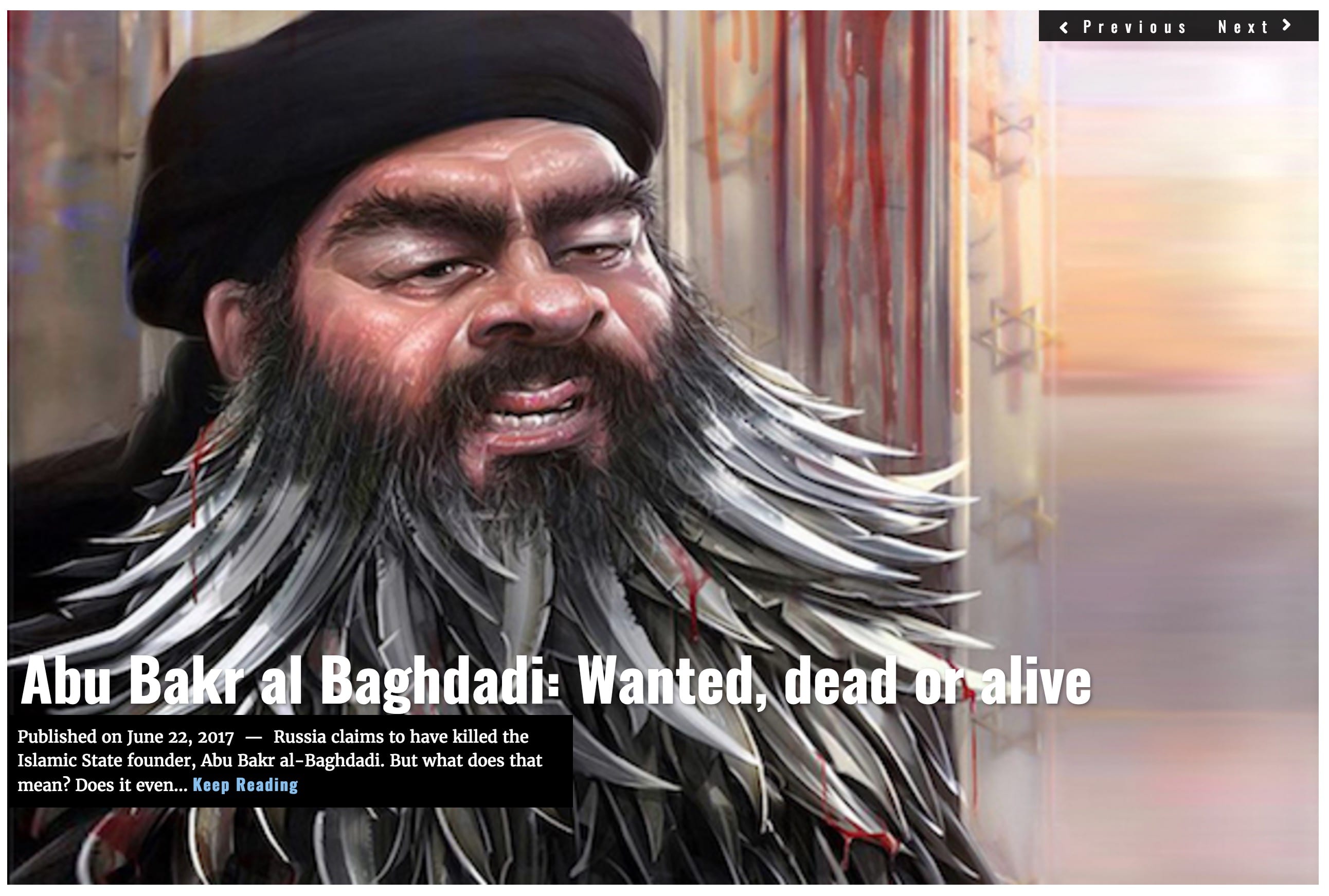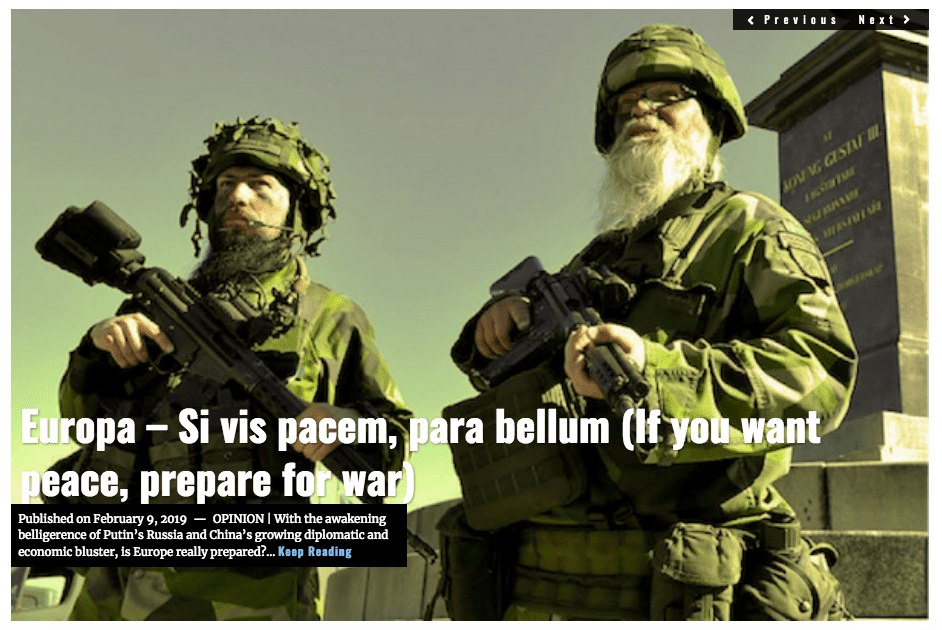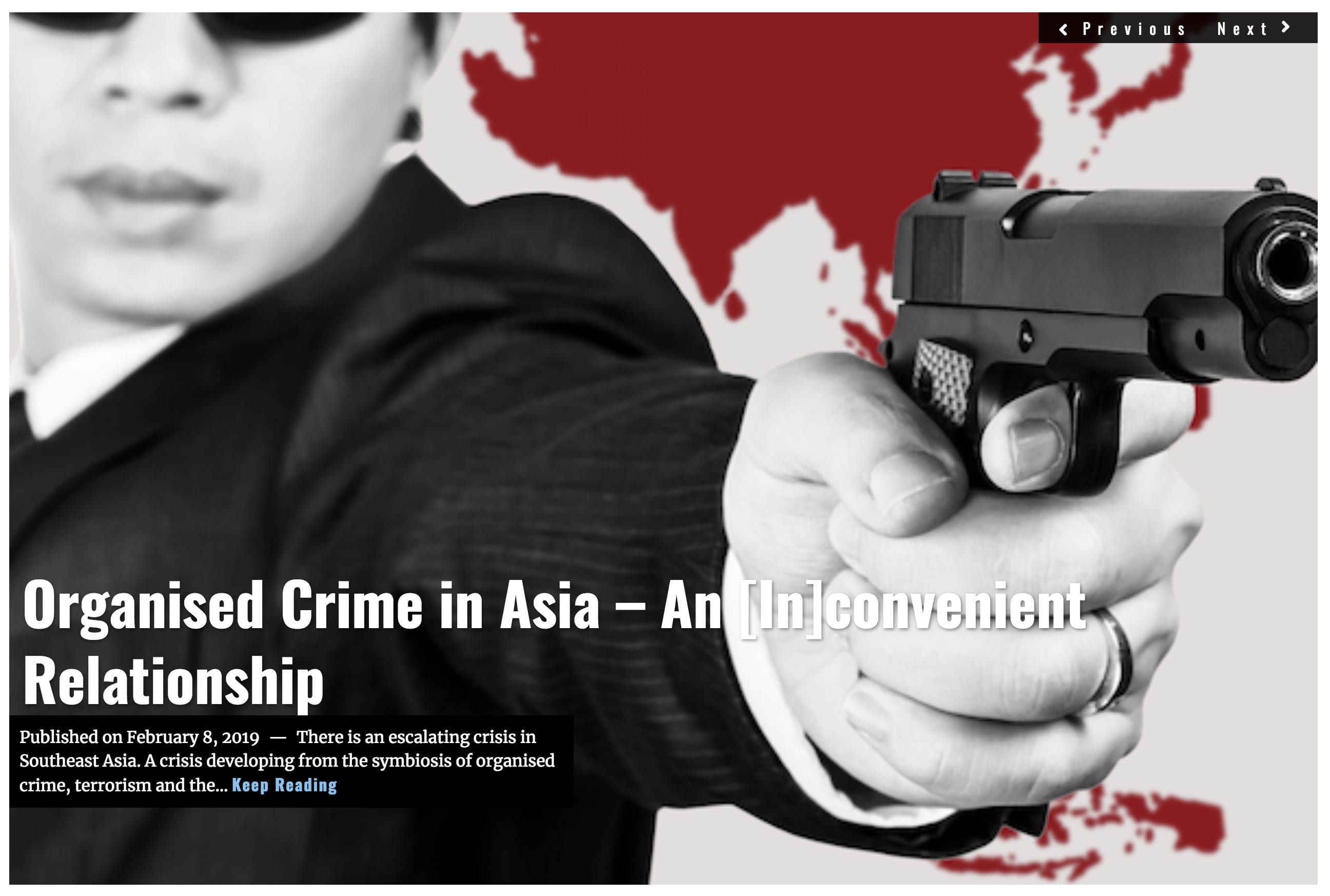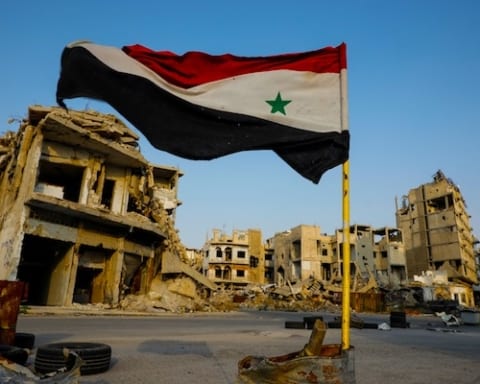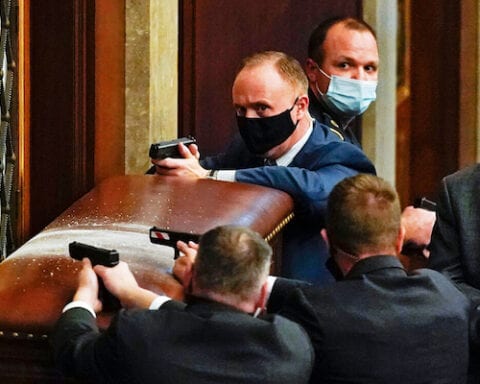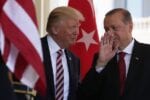As the sun sets on the Islamic State, its notorious leader faces a radical decision – a decision by his own men to remove him. After a Special Forces operation led by U.S. and British troops closed in on Abu Bakr al-Baghdadi, an unlikely coup ensued.
At 0730 ZULU+2 on January 2nd a convoy of Toyota Hiluxes and Landcruisers approached the Iraqi-Syrian border at high speed. Inside the unarmoured vehicles were members of America’s and Britain’s premier fighting forces – one Alpha Detachment from the US Marine Corps Forces Special Operations Command (MARSOC) and a six-man team from the British Army’s Special Air Service Regiment (SASR).
On the Iraqi side, the Western special operations team was under the protection of an 18 man strong detachment from the Iraqi Army’s 1st Iraqi Special Forces Brigade, also known as the battle-hardened Golden Division. The Golden Division flanked the sides and rear of the convoy using an up-armoured HMMWVs, with their guns aimed at enemies unseen but always present.
The Golden Division would only be able to protect the Westerners while on the Iraqi side. Once the convoy crossed into Syria, which would be at 0755 through a small checkpoint referred to only as X-Post One, the Golden Division would turn back. They would entrust their wards to the awaiting members of the People’s Protection Units (YPG)’s Anti-Terror Unit (YAT), the Special Forces of the YPG. Since its inception in 2014, the YAT has continuously been involved in every facet of the war against the Islamic State, always leading from the front, while fighting under the banner of the Western-backed Syrian Democratic Forces (SDF) Kurdish-Arab coalition.
Accompanying the YAT team to meet the incoming group of operators was a member of the U.S. Central Intelligence Agency’s Special Operations Group (SOG). Referred to as “Steven”, the former U.S. Army Special Forces Sergeant had been in-country working alongside the YAT, YPG and the SDF for the past 3 months.
Acting upon intelligence received, the task force consisting of three special forces groups would be united by a common goal: the capture of Islamic State leader Abu Bakr al Baghdadi.
January 4th
Utilising a combination of drone surveillance, familiarity of the terrain, and cover of night, the task force infiltrated the outskirts of the small border-town of al Marashidah. In February 2014, Marashidah had fallen under the control of the then aggressive conquests of the Islamic State. The town became a logistics and gathering point for operations in Iraq and for supplies flowing across.
In the past two years, as the fortunes of war turned against the Islamic State, Marashidah became a key control point that the self-declared caliphate would prove reluctant to part with. By the early weeks of 2019, Marashidah would be one of the final remaining Islamic State-controlled towns in Syria. With the Salafist-Jihadist group no longer in control of the immediate terrain, only holding on to very specific routes in and out of the town, Marashidah would become part of the highly mobile frontline.
Intelligence indicated that the founder and leader of the Islamic state, al Baghdadi, was visiting the al Marashidah frontline to encourage the troops to not just hold, but to advance. Reportedly, the intelligence received came, in part, from the recently captured IS-Commander Osama Awaid al-Ibrahim, aka Abu Zeid. If the information proved accurate, it was believed that al Baghdadi would have to leave the town within the coming hours, less his whereabouts would become commonly known and spur a large scale offensive on the position.
With only a handful of roads available to him, it was deemed likely that al Baghdadi and his always present security force would travel along a back road, as opposed to the heavily controlled Road 7 or 715, which connects Markadah with nearby Deir Ezzor. The backroad believed most likely to be used was designated “Road Designated 1624” or RD1624 in the planning.
RD1624 can barely be referred to as a road. Featuring hard topsoil, varying landscape with occasional dips and areas of brush, it is but a dirt road. As a natural path for grazing livestock, it became a locally known road after years of farmers and ranchers using it.
With the task force on the scene, it quickly sought out optimal terrain to create a so-called kill zone. A kill zone is a prepared area with limited access, ideally with a dip in the middle, which limits visibility from advancing enemies and can be fired down into by the awaiting forces. A well-prepared and executed attack on a kill zone is often over in under a minute, and rarely lasts for longer than a few minutes, even if the incoming target travels in a hard-shell vehicle. Satellite imagery and planning had already designated a series of potential sights for such a zone. With the zone quickly surveyed and prepared, all the men had to do was wait.
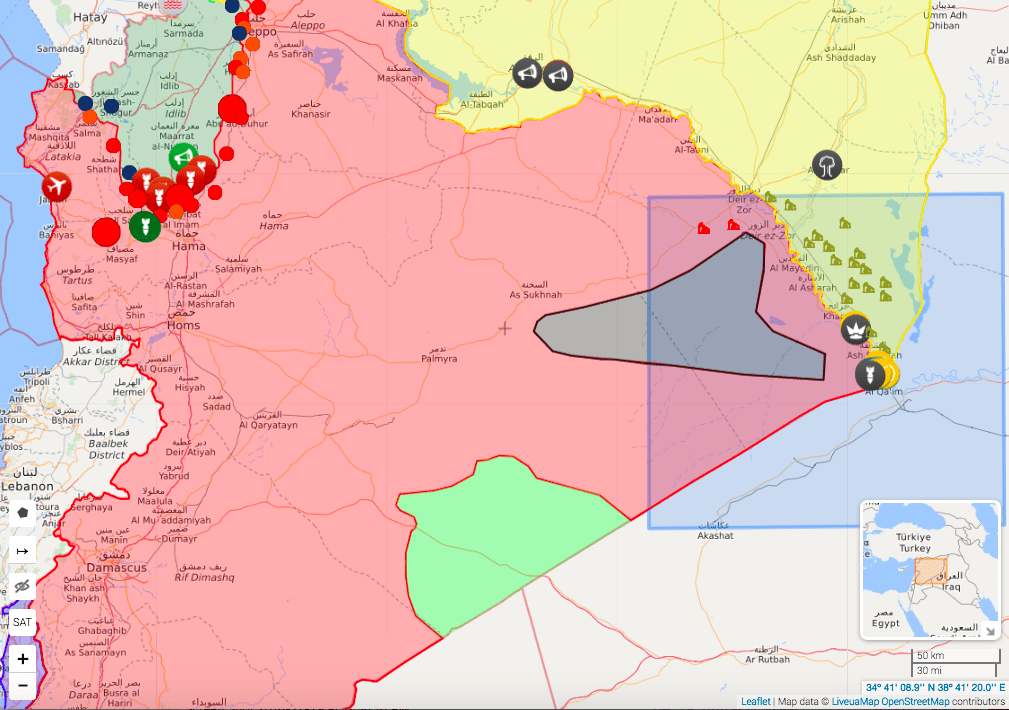
January 5th
Members of the British SAS team moved up ahead, towards the town, where they set up scouting positions from which they could conduct forward reconnaissance using air coverage assets. This consisted of small infantry deployed drones featuring powerful camera equipment.
By 1520 ZULU+2 that same day, a convoy of five vehicles was detected leaving the town travelling down RD1624. It consisted of three pickup trucks (two Toyota Hiluxes, one tan and one blue, and one tan Nissan Frontier), one grey Nissan X-Terra SUV, and one white Nissan Patrol SUV. Fitting the description of the al Baghdadi convoy, approval was given to engage once it entered the designated kill zone.
Mere minutes later, the convoy entered the dip, where special operations members lay in wait.
It still remains somewhat unclear what went wrong. The American and British operators engaged the convoy, quickly stopping the Nissan vehicles and one of the Toyota Hiluxes using a mixture of pre-prepared but small explosive charges and precision fire. The individuals inside the vehicles were permanently disabled as part of the ensuing firefight. It was quickly found, however, that the Nissan Patrol SUV was set up not just to transport the bodyguards of al Baghdadi, but also as a Vehicle Borne Improvised Explosive Device (VBIED), i.e. a car bomb with a deadman’s switch.
The kill zone had been set up anticipating such a tactic. Yet, the timing of the explosion, combined with other circumstances, appears to have been fortunate for the Jihadists. A rear gunner on the open cargo area of the still moving Toyota pick-up was disabled, but the vehicle kept moving forward — leaving the kill zone along with the X-Terra, which appears to have had some degree of up-armouring, as rounds fired into the side of the truck reportedly did little to stop the vehicle.
The task force was forced to withdraw, as it otherwise ran the risk of encountering a numerically responding superior force from the nearby town. It is unclear if the ground had been prepared with other passive ways to disable vehicles, such as tire-shredding spikes, and if so why this did not stop the two remaining vehicles. It is however clear that the objective of the ambush was not met.
Despite the operations being seemingly a failure, it would come to set off a dramatic set of chain reactions within the ranks of the Islamic State; perhaps even setting off a civil war within the groups’ ranks.
Enter the Foreigner
Much like the last phases of World War II, where Adolf Hitler refused to acknowledge or believe that his decimated and logistically challenged German army could not hold terrain amidst the coordinated strikes of Allied forces, al Baghdadi is refusing to yield. Despite horrific losses, al Baghdadi has clung to the notion that his caliphate will persevere, determined to hold onto terrain at the cost of the lives of his largely untrained in military tactics, but battle-hardened fighters.
A multitude of reports indicate that Islamic State commanders tasked with holding what territory remains, which by recent reports totals a mere four-square-kilometres, are willing to first sacrifice the Islamic State’s foreign volunteers. Estimates say that between 400 and 600 fighters in total remain inside its remaining pockets of control. Particularly those perceived to be of “lesser ethnicities”, such as Asians or Americans, these foreign fighters from far away nations, are used as cannon fodder.
As such, it is of little surprise that those lower ranking commanders of foreign descent are looking at the situation with concern for their own well-being if not their men.
As a result of this perceived reality, along with the overall feeling that the enemy is preparing yet another offensive, an increasing number of low-level commanders, many of which are of foreign descent, are advocating a surrender of all-terrain held in exchange for the option of disappearing into the desert to fight again another day. Such a tactic would by no means remove the caliphate, it would instead move it to where its enemies can do little to hurt it; into the virtual sphere.
Such a move would also leave its adherers to focus more on asymmetrical warfare across the Middle East and to strike against the heart of the true enemy— the increasingly progressive Muslim communities and the enemy in the West.
A Radical Conclusion
Much like the last phases of World War II, where Adolf Hitler refused to acknowledge or believe that his decimated and logistically challenged German army could not hold terrain … al Baghdadi is refusing to yield.
January 10th
Despite an estimated half of his security force removed, al Baghdadi made it to the relative safety of a safe house outside of the former capital of his self-declared caliphate, Hajin. A small city in the southern parts of the Deir Ezzor Governorate, Hajin sits along the Euphrates River located some 92 miles, or about four hours by vehicle, from RD1624.
Once settled in, al Baghdadi began to meet with his commanders to plan a counter-offensive against the SDF and the Syrian Arab Army (SAA). Several plans were reviewed. Most of these featured standard insurgency tactics with the aim of disrupting enemy advancements enough to make it possible for the relatively minuscule number of remaining loyal forces to make a counter-offensive possible. At this point, it would appear that no matter which strategy is deployed, the Islamic State will suffer a heavy death toll on its remaining forces.
With this in mind, along with the knowledge that al Baghdadi’s personal security detachment was severely depleted from the recent western commando attack, a low level IS commander named Abu Muath al Jazairi came to a radical conclusion: al Baghdadi must be removed from power.
Al Jazairi is believed to have been born in the Iraqi city of Basra in 1995 to a medium income family. Amidst the Western incursion into Iraq, members of his family were radicalized and joined a Sunni militia aligned with al Qaeda. Al Jazairi would follow in their footsteps, and soon find himself trading alliances between Sunni militia groups operating in the security vacuum of the Syrian civil war.
A group consisting of eight like-minded foreign fighters were quickly gathered.
Upon nightfall, the eight men, led by al Jazairi approached al Baghdadi’s safehouse. During their approach, they were spotted by a sentry who called out a warning. A firefight broke out. With the men inside the safehouse now aware of the attempt, al Baghdadi’s bodyguards quickly grabbed their leader and escaped into the desert night.
The firefight, and attempted uprising, was quickly quelled. In the end, two of al Jazairi’s men lay dead and the surviving members of the group were on the run. A few hours later the Islamic State would announce a sizeable bounty on the capture of al Jazairi.
#SDF have advanced on northern and western axis into Baghuz since 19:00 yesterday evening, capturing 41 positions of ISIS and destroying fortifications. IS counterattack was foiled at 4 am this morning. Heavy fighting is going on inside the last village at the moment.
— Mustafa Bali (@mustefabali) February 10, 2019
The Aftermath
On January 28th, the SDF launched its final offensive on the town of al Marashidah. By February 7th the town was described as liberated from the Islamic State’s control.
On February 8th, the SDF launched a large scale offensive on the last remaining pockets under IS control in eastern Syria. It is described as “the last full measure” against a dying foe.
Mustafa Bali, SDF spokesman, stated in Arabic on Twitter that “The SDF have started to launch … the decisive battle to finish off the remaining ISIL terrorists in the village of Baghouz”.
As of yet, the bulk of the fighting has been concentrated near Syria’s largest oil field, the al Omar oilfield. Since the offensive began, the SDF has reportedly captured or destroyed 41 IS-positions and fortifications. IS launched a counteroffensive at 0400 ZULU+2 on February 10th inside a nearby village to the al Omar oilfield, which was pushed back using intense air support assets from the U.S.-led anti-IS coalition.
SDF spokesman Bali stated, “The battle is very fierce. Those remaining inside are the most experienced who are defending their last stronghold. According to this, you can imagine the ferocity and size of the fighting.”
Despite the fierce opposition, the SDF leadership has stated that it believes it can finish off the last remaining pockets of resistance within the coming week.
While the coup attempt on al Baghdadi became known within a few days, he himself has continued to remain incommunicado. Last time al Baghdadi is believed to have made a public announcement was in August 2018. During that pre-recorded and undated speech, al Baghdadi called for renewed efforts to strike in Europe and North America. It was this speech that is believed to have inspired the Strausberg attacker, Chérif Chekatt, who on December 11th, 2018 fired into the crowds at a Christmas market.
Al Baghdadi’s whereabouts is currently unknown. But reports indicate that the US-British-Kurdish special operations team remains in Syria.
[This article was written with the help of sources in the American, Iraqi, Kurdish, Lebanese, and Jordanian intelligence and military community.]
John Sjoholm, Lima Charlie News
[Edited by Anthony A. LoPresti]
John Sjoholm is Lima Charlie’s Middle East Bureau Chief, Managing Editor, and founder of the consulting firm Erudite Group. A seasoned expert on Middle East and North Africa matters, he has a background in security contracting and has served as a geopolitical advisor to regional leaders. He was educated in religion and languages in Sana’a, Yemen, and Cairo, Egypt, and has lived in the region since 2005, contributing to numerous Western-supported stabilisation projects. He currently resides in Jordan. Follow John on Twitter @JohnSjoholmLC
Lima Charlie provides global news, featuring insight & analysis by military veterans and intelligence professionals Worldwide.
For up-to-date news, please follow us on twitter at @LimaCharlieNews
In case you missed it:

